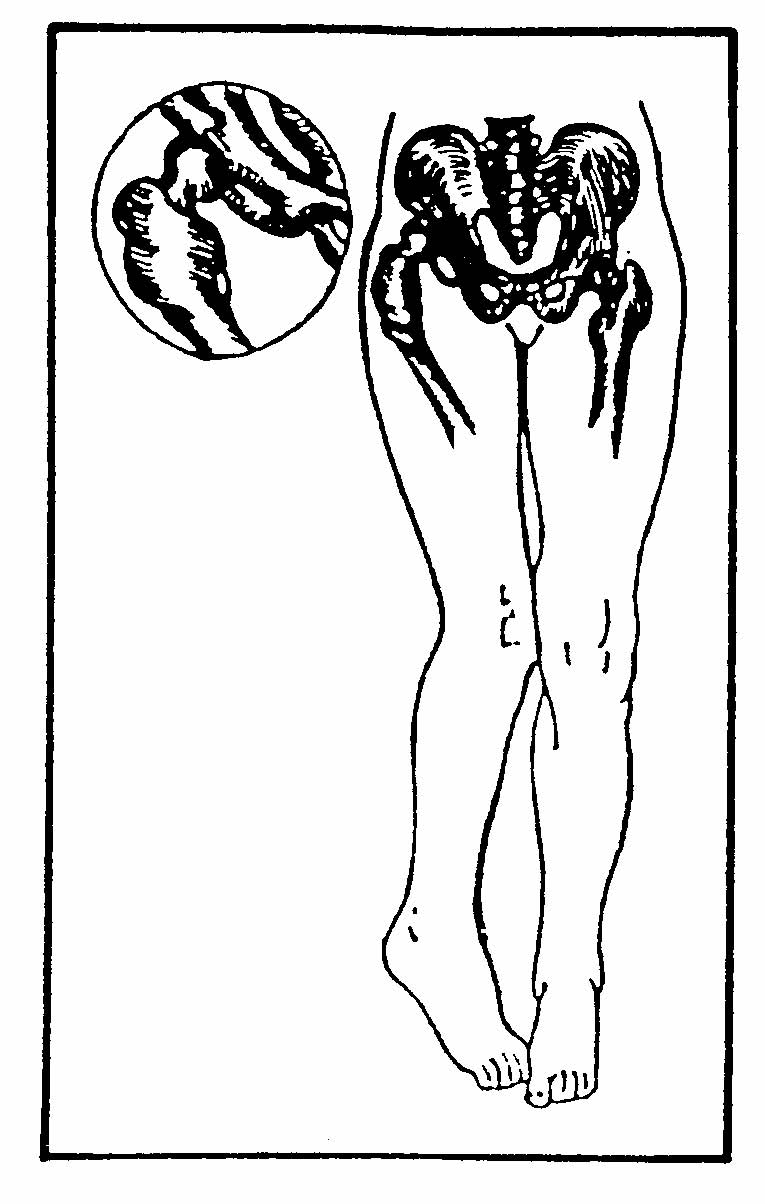Treating Fractures in the Field
Lesson 4: Fractures of the Lower
Extremities
4-1
4-1. IDENTIFY SIGNS AND SYMPTOMS OF A FRACTURED OR DISLOCATED HIP
The head of the femur (figure 4-1) and the hip form a "ball and socket" type joint. When the head of the femur is pulled away from the hip, a dislocation exists. When the neck or upper end of the femur is fractured, it is commonly called a "fractured hip" even though none of the pelvic bones is actually fractured. A dislocated hip and a fractured hip (upper femur) are very similar. Some of the signs and symptoms associated with these injuries are given below.
a. Pain. Both injuries are accompanied by considerable pain. The casualty will resist moving because of the pain.
Figure 4-1. Femur.
b. Severe Deformity. A hip injury results in severe deformity of the affected leg and hip. There are two general categories of hip dislocations--anterior and posterior.
(1) Posterior dislocations comprise 70 to 80 percent of all hip dislocations. A large force is required to strike the flexed knee with the hip flexed, adducted, and internally rotated in order to cause a posterior dislocation. This injury occurs more commonly during contact sports such as American football and rugby when a running player is tackled and falls out of control onto a flexed knee. (See figure 4-2) The leading cause of posterior dislocations is automobile accidents.
Figure 4-2. Posterior dislocation of the hip.
(2) Anterior dislocations occur when a hip is flexed with the leg abducted and externally rotated. These injuries are more common in sports such as basketball and gymnastics where players are running at high speeds, jumping, and landing awkwardly with the knees flexed. These could be common causes of injury on the battlefield as well. This force drives the femoral head out of the acetabulum, tearing ligaments, and often fracturing the femoral head and/or acetabulum. (see figure 4-3).
Figure 4-3. Anterior dislocation of the hip.
(3) When the top of the femur is fractured, the affected leg is rotated toward the midline of the body. The affected leg is usually shorter than the uninjured leg. There may be an open wound associated with the injury.
c. Impaired Sensation. The affected extremity may have tingling or other abnormal sensations (paresthesia) or the casualty may have a loss of sensation in the limb.
d. Impaired Circulation. Impaired circulation may result in coolness and/or cyanosis (bluish tint) of the affected limb. In some cases, the pulse distal to the injury may be lost due to pressure against the artery.
e. Blood Loss. Hip injuries usually result in significant blood loss, especially if a fracture is present. If there is no open wound, the internal bleeding will result in swelling. Significant internal bleeding may occur before the swelling is evident. The blood loss can result in hypovolemic shock.




